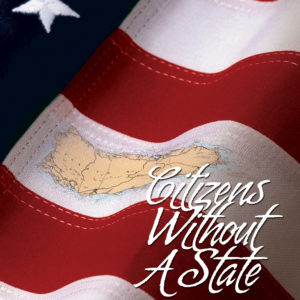The new Puerto Rico Statehood bill includes a requirement that Puerto Rico voters ratify the bill before Puerto Rico is admitted as a state.
Some people are asking, “What does ‘ratification’ mean?” and others are saying it’s just another plebiscite.
In fact, ratification is an official consent that makes a law final.
How ratification works
The Equal Rights Amendment, a constitutional amendment saying that women are equal under the law, was introduced and passed in 1972. 38 states needed to ratify the amendment before it could become law. Only 35 have done so.
This was a law that was passed by Congress, but it won’t become law until 75% of the states (that’s 38) agree by ratifying the law.
Just so, if Congress offers statehood to Puerto Rico under the terms of the new law — that is to say, if it passes — it still won’t become law until Puerto Rico ratifies it.
If the majority of the voters of Puerto Rico vote against it, Puerto Rico will not become a state.
The majority of voters have already chosen statehood, not just in 2020 but also in 2017 and 2012. The requirement for ratification will make it absolutely certain that Puerto Rico wants statehood.
The same as Hawaii and Alaska
In both Hawaii and Alaska, a final ratification vote took place after Congress had voted for statehood.
Resident Commissioner Jenniffer Gonzalez-Colon said in the press conference announcing the statehood bill that shr and other members of Congress don’t want to make up a new process. They want to use the same process that Congress and the territories of Alaska and Hawaii had already used.
It’s important, since there are some members of Congress who are opposed to statehood, that the process be completely clear and unquestionable. Following the same process we used to bring in the last two territories as states will make sure that the process is correct and acceptable.
Ratification by states is not needed
Some people believe that existing states must ratify the admission of a new state. This is not true, and it never has been true. Congress can admit a new state with a simple majority.
Some believe that states have to be admitted in pairs, too. This also is not true.
Just another plebiscite?
It also is not true that the ratification vote would be another plebiscite.
A plebiscite is a vote taken to find out the will of the people. Some comments have made a big deal out of the fact that the 2020 plebiscite was “nonbinding” — but that is the nature of a plebiscite. It is basically a poll of the people, for the information for those who govern the people.
It is an act of self-determination, not an act of the government.
Ratification follows the act of the government. It is the people’s official approval and acceptance of a decision made by the government on their behalf.
If the people of Puerto Rico vote to accept the offer of statehood from the United States Congress, and we think they will, then Puerto Rico will become a state. The process begun so many years ago will be complete at last.








2 Responses
Does the filibuster is a obstruction in the senate for the admission of PR as a state, or is there any mechanism to avoid the filibuster for the admission of PR as a state?
Yes, under the current Senate rules a 60 vote majority would be required to end a filibuster so that a bill could proceed to vote on the Senate Floor. However, there is a clear capacity by the majority to make a narrow amendment to the Senate rules to exempt statehood admission bills from the 60 vote majority (filibuster proof) requirement.